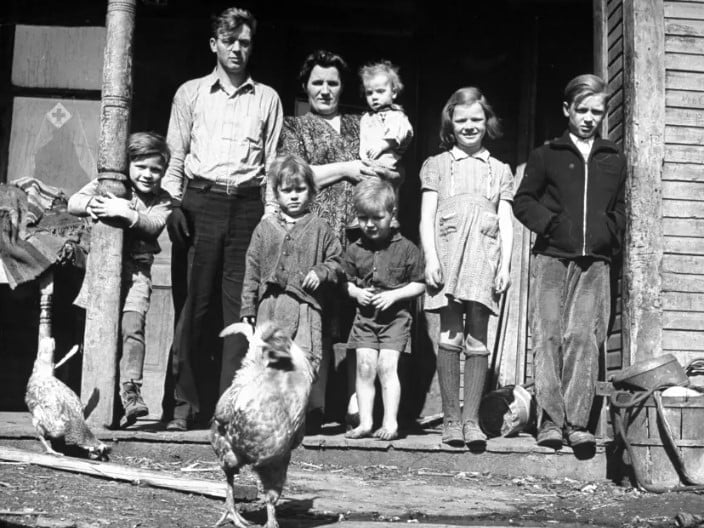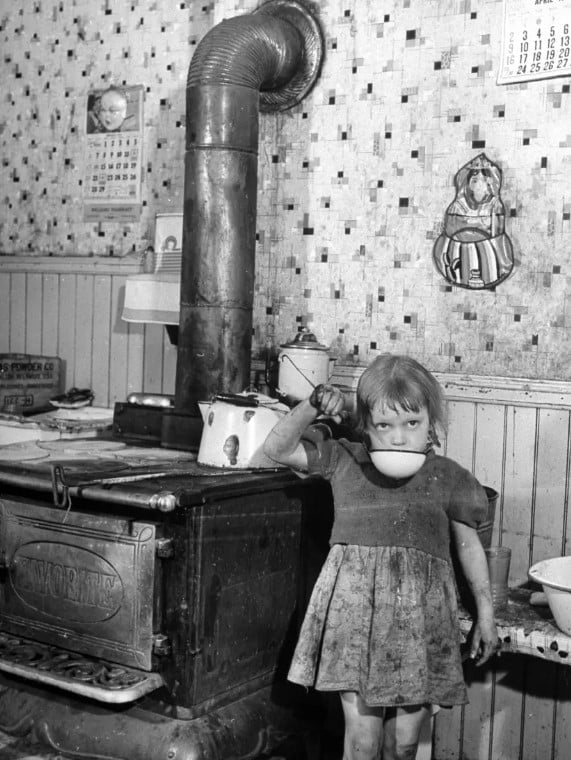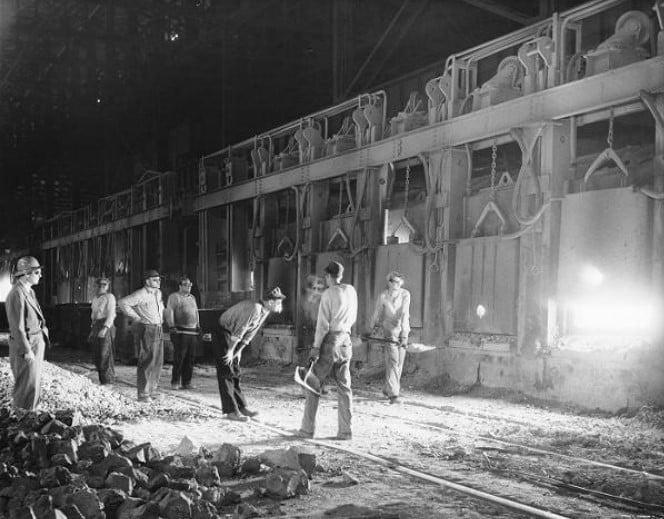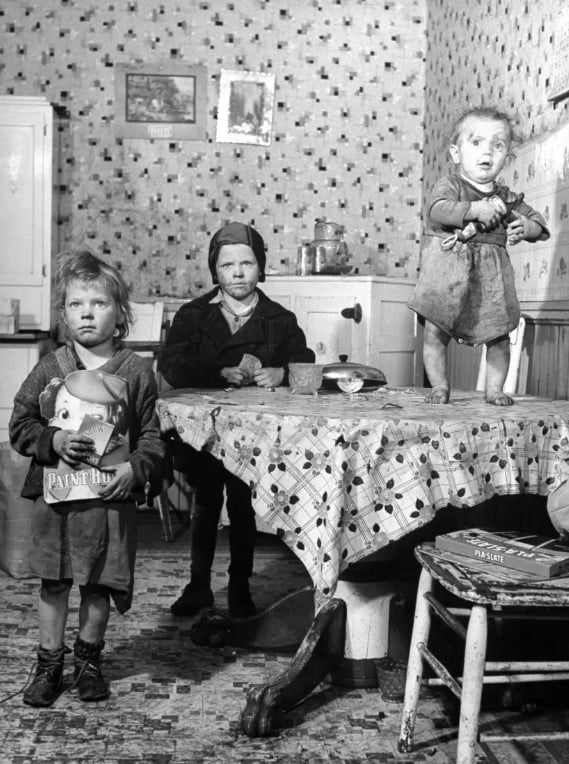Innocence Amidst Turmoil: A Little Girl In A Dirty Kitchen Of A City Pressed Down By The Weight Of War
In the heart of Pittsburgh’s steel era, amidst the clangor of mills, smoky skies, and the grit of industrial life, a photograph captured a poignant moment. It wasn’t of grand factories or towering smokestacks, but of a little girl, quietly sipping water in a dirty kitchen.
This image, etched in black and white, tells a story beyond its frame – a glimpse into the daily struggles of a steelworker’s family, their resilience amid harsh conditions, and the enduring spirit of a city defined by its industrial might.
Details on the photo
Who took it?

Photographer Wallace Kirkland, who had a degree in social work administration and had worked at Hull-House in Chicago, joined LIFE’s staff with a keen eye for capturing the lives of those often overlooked.
In 1944, he snapped a poignant photo of a little girl drinking from a chipped cup in the dirty kitchen of a steel worker’s family in Pittsburgh.
This image doesn’t highlight the city’s booming steel industry or the workers’ grueling efforts. Instead, it focuses on the innocence of a girl in a modest kitchen, reflecting the heavy toll of the wartime era on ordinary families.
What does it feature?

In the photograph, the adorable girl stands by a chipped porcelain sink, her dark hair in a loose braid with wisps escaping around her face. Her faded dress hangs loosely on her small frame. In her right hand, she holds an enamel ladle and uses it to drink water.
Her large, solemn eyes, the clearest feature in the photo, reveal a depth and weariness beyond her years, suggesting a life touched by hardship.
The kitchen contrasts sharply with her innocence. The walls are dull gray, streaked with grime, and the kitchen tools are blackened, reflecting the constant struggle against Pittsburgh’s chill.
Perhaps, the girl in the photograph eventually grew up, the memory of that war-torn childhood fading with time. But the resilience she embodied, the quiet determination etched in her young eyes – that’s a legacy that continues to inspire. It’s a reminder that even in the face of immense hardship, the human spirit endures.
The impact of World War II on Pittsburgh, a center of American steel production

During World War II, Pennsylvania played a crucial role in American steel production, supplying almost a third of the US’ steel. With many men serving overseas, the demand for workers at home was immense.
In 1944, Pittsburgh, a city in western Pennsylvania, was a bustling hub of steel manufacturing. The constant noise of the mills and the sight of smoke stacks defined the city, creating a soundtrack and landscape that permeated every household.
During this period, steel workers experienced a peak in demand as military contracts poured money into the industry. Both men and women joined the workforce, driving production amid wartime needs. However, the War Labor Board imposed wage limits to curb inflation, despite rising living costs, affecting numerous families.

After the war, Pittsburgh underwent redevelopment that notably impacted its air quality and working-class neighborhoods, including African-American communities, which faced substantial housing destruction.
“For nearly a century and a half the metropolis had developed as an industrial slum,” LIFE noted in a 1956 story about efforts to rebuild the city. “Smothering under its black smoke shroud, it had been squalid, sooty and tired. At the end of World War II, with real estate values fallen and its people and its industries craving to move elsewhere, Pittsburgh had seemed incurably ill.”

